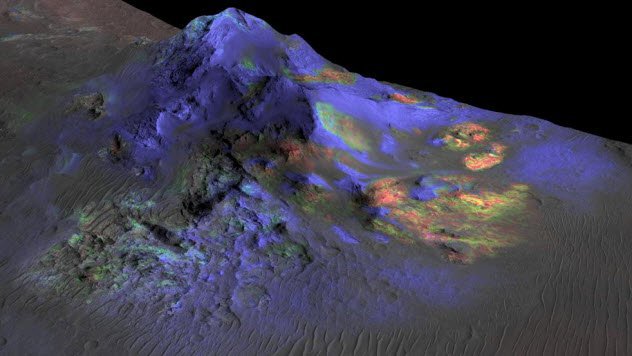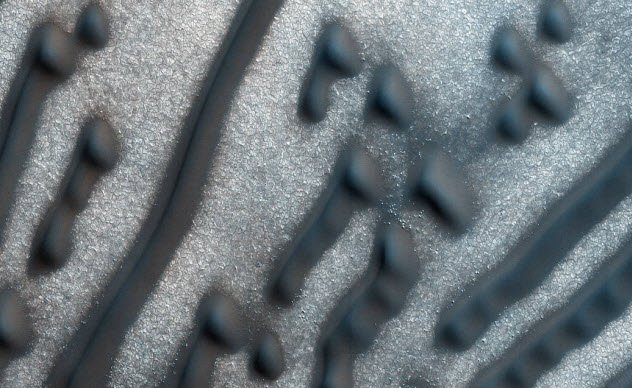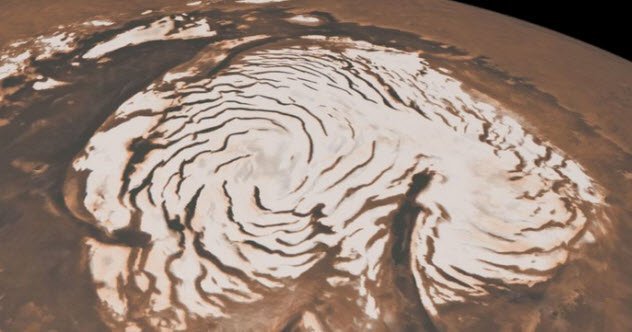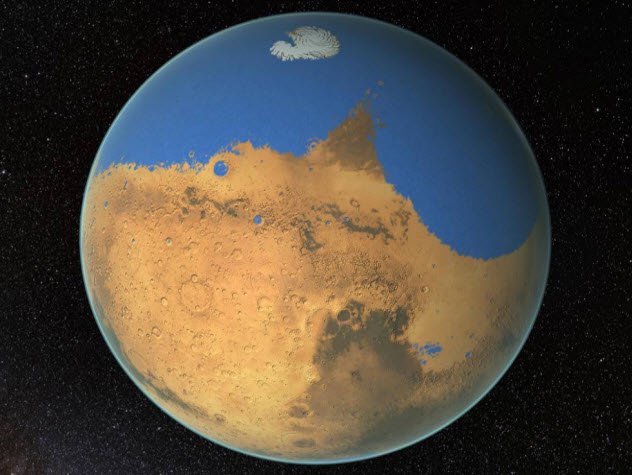When NASA announced the discovery of water on Mars, we all thought it would be the biggest discovery related to Mars in this century. But since then, there have been multitudes of more significant and jaw-dropping discoveries that somehow slipped from the mainstream media. Currently, NASA has two rovers and three orbiters which are solely designated for exploring Mars; 2 more are on their way. Below is the list of 7 of the greatest discoveries made by NASA.
1) Mars Has Impact Glass Which Might Preserve Life

The discovery of Impactite is ground-breaking. It is a type of rock created from a meteorite impact. This is often a mixture of various rocks, minerals, glass and crystals that are formed through shock metamorphism.
NASA’s Mars Reconnaissance Orbiter has recently detected deposits of impact glass that were preserved in several craters on the Red Planet. In 2014, a scientist Peter Schultz discovered similar impact glass in Argentina, preserved plant matter and organic molecules. So this is significant because it shows that Mars’ impact glass could contain traces of ancient life.
2) Mars’ Mohawk

The MAVEN spacecraft was launched with the goal of studying Mars’ atmosphere. Based on its observations, Mars has a pretty sweet hairstyle that actually consists of electrically charged particles blasted away by solar winds from its upper atmosphere. The electrical field is mainly generated by the incoming solar winds, but by other powerful solar events as well like coronal mass ejections and solar flares. This creates a polar plume diagram which bears a resemblance to a “Mohawk haircut.”
3) Mars’ Future Crops

If our far-fetched plans of habitating the Mars are ever to be materialized, then we will need to develop ways to feed the colonists on the Red Planet. According to scientists at Wageningen University, we are up to four vegetables and cereals which would be safe to grow and consume in Martian soil.
Those crops include tomatoes, radishes, rye, and peas. These Dutch scientists have been growing the crops in a Mars-like soil which was developed by NASA. However, Mars’ soil is known to contain high levels of heavy metals such as copper and cadmium. Food grown in the soil of Mars didn’t have enough of these heavy metals to be considered as “dangerous levels.”
4) Mars’ Morse Code Dunes

Currently, scientists are saying that a nearby depression created by an old impact crater limited the amount of sand available for dune formation. The “dash” dunes were formed by winds coming in at right angles from two directions, thus, creating their linear form.
5) The White Planet

According to astronomers working at the Southern Research Institute in Boulder, Colorado, there was a time when the ‘Red Planet’ was actually more white than red. This is because Mars underwent a relatively recent ice age which was extreme than anything we’ve seen on Earth.
The team reached this conclusion by experimenting on the layers of ice at the Martian north pole. On Earth scientists would dig through the ground, pull out a long tube of ice and carefully study each layer. However, for Mars, the astronomers used the Shallow Subsurface Radar to find out the age of ice on it.
6) Mars Had More Water Than Our Arctic Ocean

Although the location of Mars’ old ocean is still a point of contention, scientists do agree on the fact that the Red Planet used to have a lot of water. NASA scientists suggest that at one time Mars had enough water to completely cover the planet’s surface in one giant ocean, which would be 140 meters (450 ft) deep.
These estimations were made after the observations by the W.M. Keck Observatory in Hawaii and the Very Large Telescope in Chile. According to them, Mars’ atmosphere currently has two forms of water: H2O, and HDO. HDO is a form where a normal hydrogen molecule is replaced by deuterium, a hydrogen isotope.
7) Mars Had Underground Volcanoes

This kind of volcanoes are usually found in igneous rock, and the newly discovered tridymite leads to the conclusion of heavy volcanic activity in Red Planet’s past. New evidence collected by the Mars Reconnaissance Orbiter suggests that Mars once had volcanoes that resided and erupted under ice.
The probe studied a region of the Red Planet known as Sisyphi Montes. It is full of flat-topped mountains which are similar in shape to Earth volcanoes that erupted underneath the ice.
Have many other cool facts about Mars exist that we don’t know about? Comment below!


